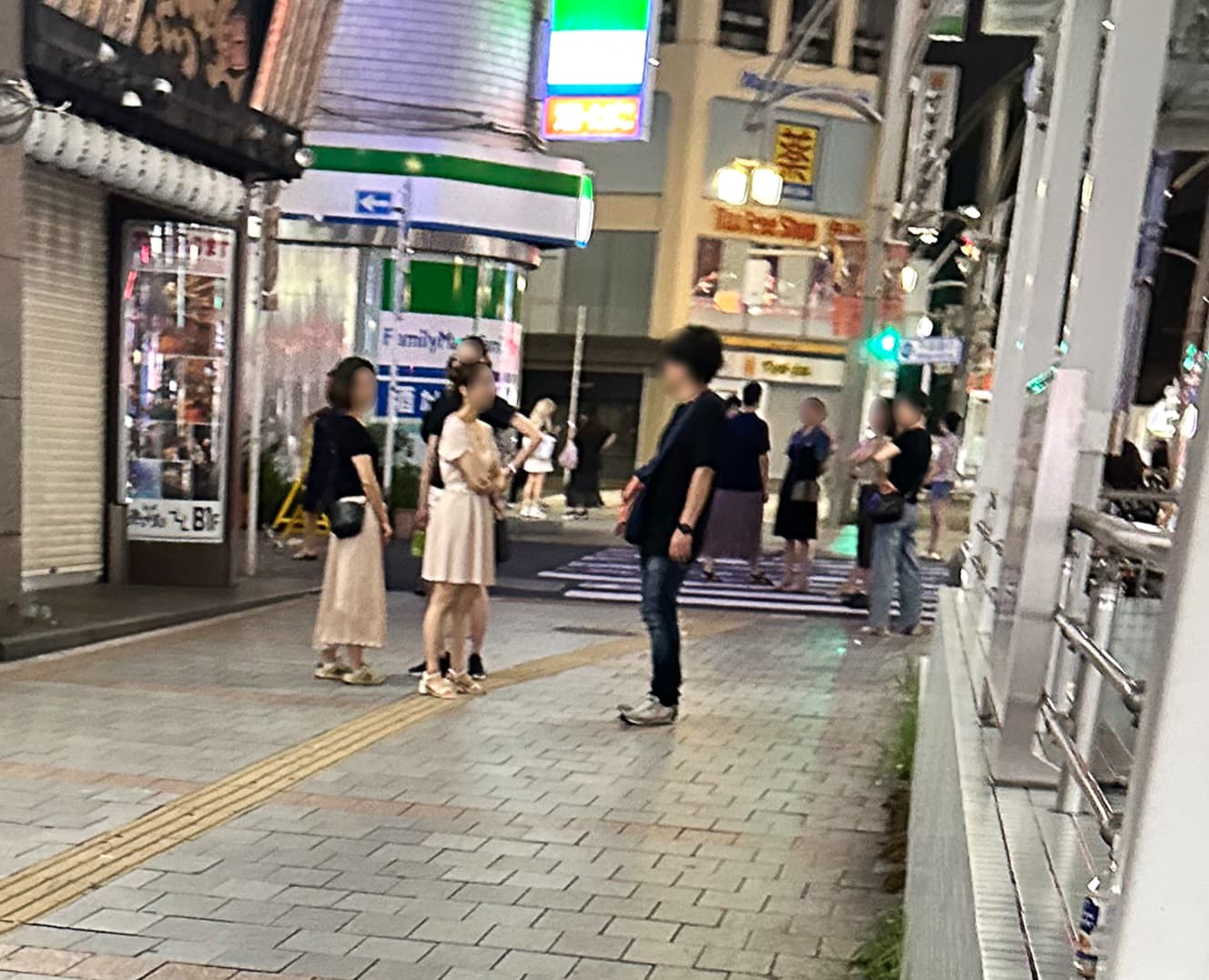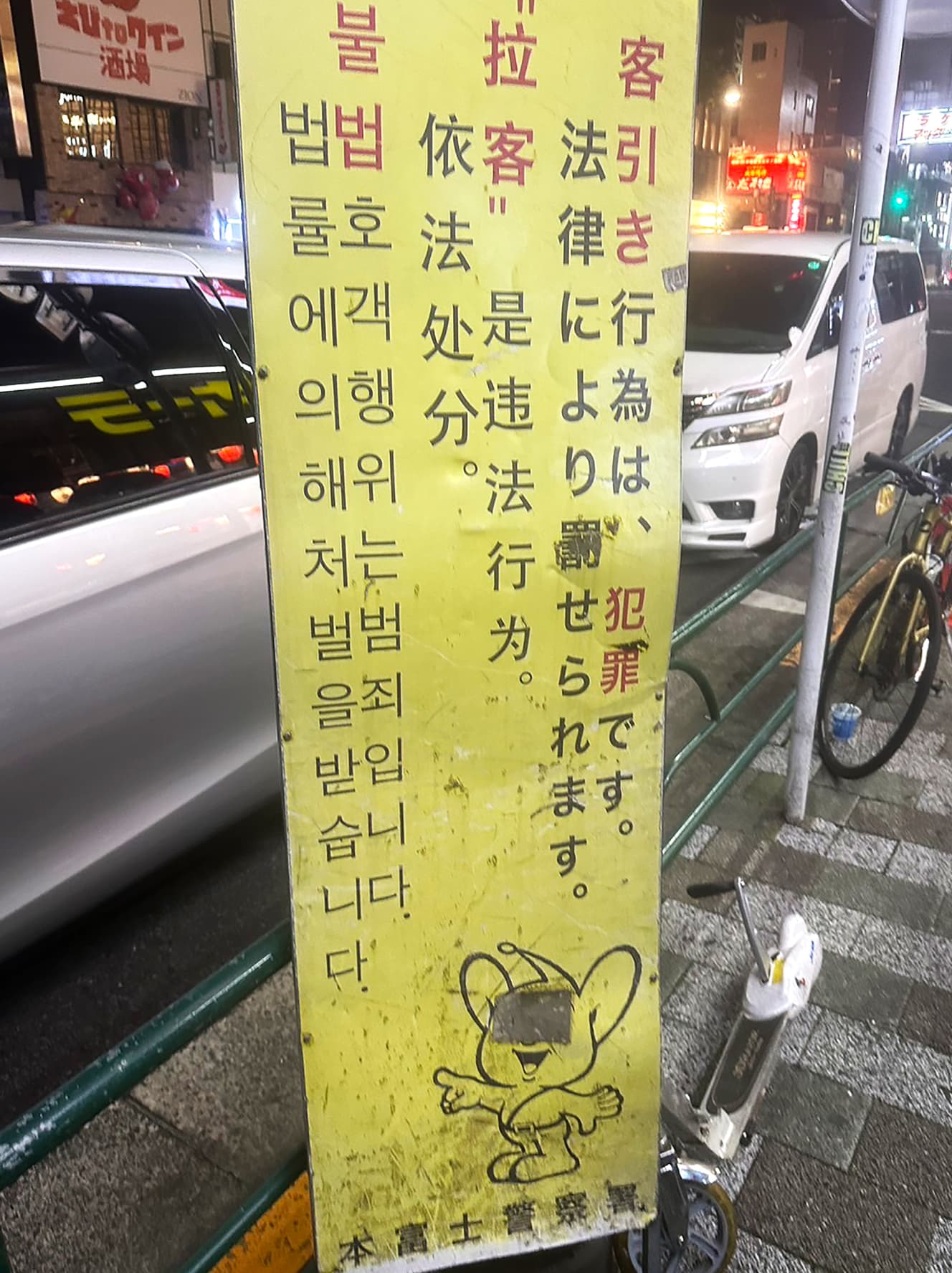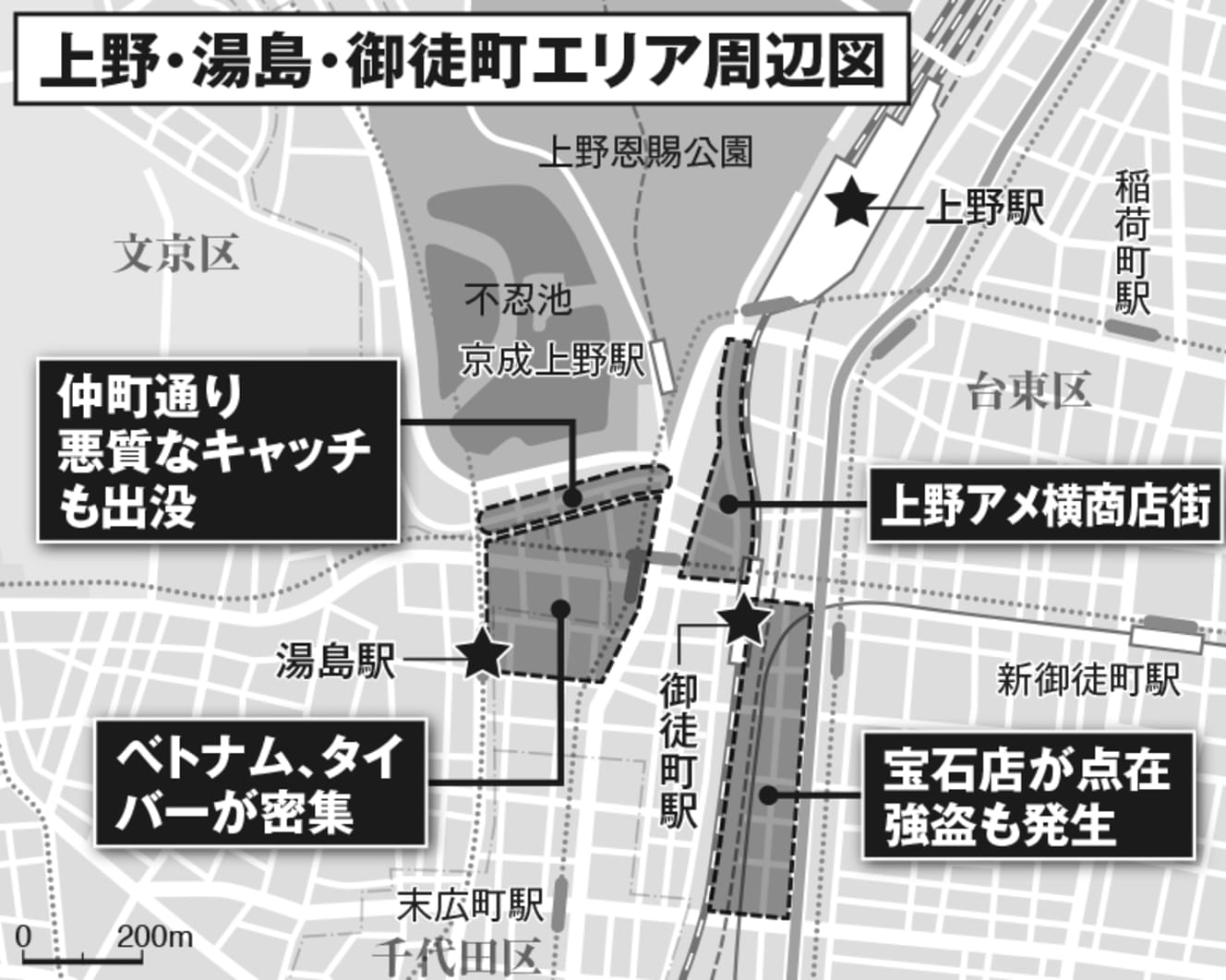Foreign Entrepreneurs Transform Tokyo’s Entertainment Districts in Ueno, Yushima and Okachimachi
The old-fashioned stores have disappeared, and Indian, Chinese, and Vietnamese communities are intertwined with each other. A jewelry store that was the scene of the "Luffy's Robbers" incident also exists.

Rapid Transformation of Ueno, Yushima, and Okachimachi
Located in the heart of Tokyo, Ueno Station and Okachimachi Station serve as railway hubs, known as the “northern gateway.” The Ameyoko shopping street, which runs parallel between the two stations, has regained its vibrancy, attracting about 2 million visitors during the year-end season, primarily from inbound tourists.
In Okachimachi, just a five-minute walk from Ameyoko, there are said to be over 2,000 jewelers, making it one of the largest concentrations in Japan. Stepping into Yushima, also within walking distance, you are greeted by streets that evoke a sense of Southeast Asia. It is rare in Tokyo to find such closely situated commercial areas with distinctly different characteristics.
Moreover, each of these commercial zones is undergoing rapid transformation. We walked through this deep town in the city center.
Ueno is currently vibrant, even on weekdays. During the day, izakayas have expanded their seating onto the streets, overflowing with people sharing drinks. However, this lively atmosphere is not necessarily welcomed by everyone.
“There are too many izakayas seating customers on the street without permission or exceeding the scope of their permits. Now, about 60% of Ueno’s dining establishments are run by foreigners. Customer manners are not great, and it’s very troublesome for other businesses. Measures against aggressive solicitations are also necessary,” said a retail store owner in Ameyoko.
Originating from the post-war black market, Ameyoko was once crowded with fish shops. However, their numbers have drastically decreased to the point where they can fit in one hand. Masakazu Kobayashi, 57, who runs a fish shop in the area, explains:
“In Ameyoko, about 80% of our customers are foreigners. Due to aging and generational changes, some fish shops have closed, and foreigners have taken over those locations. The first kebab shop opened over ten years ago. After that, Chinese restaurants came in large numbers. Although the number of visitors to Ameyoko has increased, foreigners don’t buy fish, so business is tough.”
The scene of traditional shops spreading across Ameyoko is now a thing of the past. Currently, Asian shops and chain stores dominate the area.
Amidst this transformation, some areas are experiencing confusion and an increase in violent crime. Exiting Ueno Station and passing through the “Ameyoko Center Building,” which houses clothing, jewelry, and Asian food specialty stores, leads to Okachimachi Station. From there, heading toward Akihabara reveals numerous jewelry shops and wholesalers.
Signs display terms like “Gold,” “Diamonds,” and “Rolex.” Guard personnel dressed in security uniforms create a formidable atmosphere.
“This area has always had a high incidence of robberies, but it has become particularly noticeable in recent years. A common pattern is that the same stores are targeted repeatedly. It seems like a list of stores has been leaked; in March 2022, the Luffy robbery gang also targeted us. The stores being hit are always those dealing in gold, diamonds, and luxury watches.”
The person sharing this is a man who has operated a wholesale business here for many years. He notes that since most are small, individual shops, the budget for security measures is limited, and there are limits to what we can do.
“Business-Savvy” Indians
Since around the 1960s, Okachimachi has flourished as the “town of jewels,” thanks to the gathering of Buddhist altar craftsmen whose skills were transformed into jewelry. As times have changed, the number of Asian shop owners and customers, particularly from India, has increased. Yasumi Yoda, 57, who opened a jewelry store a few years ago, shares:
“About 80% of our buyers are foreigners. Recently, Chinese shops have been losing vitality, and their departures are noticeable. The companies that stand out are those of Indian origin. They are very successful in business, forming a significant community by not just renting stores but even purchasing entire buildings.”
As he describes, there are areas concentrated with jewelry shops from India and Islamic countries. Manish Kothari, 46, who has been in Japan for 27 years and runs five companies, shares his insights on the rise of the Indian community.
“We handle all the polishing and purchasing of gems ourselves without going through intermediaries, which allows us to keep prices low and our profits high. Including sales through social media, business is going really well. There are nearly 100 Indian companies in this area alone.”
While foot traffic slows down in Ueno and Okachimachi at night, the number of male customers in Yushima increases, drawn by desire. Nakamachi Street, the main thoroughfare, is lined with cabarets and girls’ bars. The abundance of yakiniku restaurants, ethnic cuisine, and clubs and bars from the Philippines, Thailand, South Korea, and China is also striking.
Among the most dynamic groups in Yushima are the Vietnamese. In the past four to five years, the number of Vietnamese girls’ bars has surged to nearly 20. The pioneer among them is “Queen.”
Upon entering the store, it was almost full of salaryman-type Japanese men. A foreign student named Nguyen (pseudonym), wearing an ao dai, took a seat and cheerfully responded to questions.
“Since around the time of COVID, there has been a sudden increase in Vietnamese bars. Most of the staff work here, study, and become mamas at nearby establishments. Almost all the customers are Japanese.”
Peeking into other Vietnamese bars, many of the Vietnamese staff were seen carrying luxury brand bags like Louis Vuitton. They appeared to be doing quite well. When speaking with the mamas at Filipino and Thai pubs, they lamented, “We can’t compete with the momentum of the Vietnamese.
 Manish Kothari, who runs a jewelry business in Okachimachi, has been conducting jewelry auctions using Instagram’s live feature.
Manish Kothari, who runs a jewelry business in Okachimachi, has been conducting jewelry auctions using Instagram’s live feature.
Taken to the ATM.
On the other hand, incidents involving foreigners have also surged. In May 2022, a Vietnamese woman was found dead with a towel stuffed in her mouth. Her body was discovered on the street near a club in Yushima, and it was revealed that she was in a state of confusion due to the synthetic drug MDMA. At the time, only Vietnamese customers were allowed entry into this club, but a regular Vietnamese female customer disclosed that “illegal drugs were rampant.”
Following the incident, the club was closed. The management changed, and it reopened in July of this year as a different establishment. I visited the place and noticed significant changes, including strict baggage checks that were not present before. All the customers appeared to be Vietnamese.
Near the club, a trio of men who seemed to be Vietnamese were being questioned by the police. After about ten minutes of baggage inspection, they were released but looked unhappy. This likely indicates that the police are focusing their patrols on Yushima.
The bustling streets of Yushima span both Bunkyo and Taito wards, and both districts have outsourced patrols to enhance monitoring. According to a passing patrol officer, incidents have been reported such as “being lured by Chinese women soliciting illegally and being charged hundreds of thousands of yen,” “having a cash card stolen from my wallet,” and “being forced to drink sweet beverages that caused memory loss.” Local shopping district representatives shed light on the situation.
“They lure in intoxicated customers with offers like ‘All-you-can-drink for 3,000 yen!’ and then get them heavily drunk to charge exorbitant fees. It’s a classic method, but many Japanese people, wanting to avoid trouble, end up paying whatever they’re told. The division of jurisdiction between Ueno and Honbuji police makes investigations difficult.”
The activity of solicitors peaks after 11 PM when patrols disappear. At the entrance of Nakamachi Street, around 20 women who appeared to be Chinese were scouting for targets. Once they set their sights on someone, they would encircle them and forcibly pull their arms. I was also surrounded and nearly lured into a mixed-use building. I almost got pulled into a Chinese pub, but managed to break free and escape outside.
Then, another group of solicitors persistently approached me, insisting on “drinks” and “massages.” They tried to pull me into a snack bar that was not normally open for business. The moment I showed any interest, they pressed their bodies against me. This aggressive and persistent behavior helped me understand part of the reason why victims continue to be targeted.
At a convenience store located at the end of Nakamachi Street, a bar owner noted, “It’s common to see men withdrawing money from ATMs with Chinese women by their side.”
A Chinese bar owner who has been running a snack bar in Yushima for over ten years expressed strong outrage at the current situation.
“The touts are sometimes identifying themselves as Taiwanese because they know they will be on guard if they are recognized as Chinese. Many of our customers have been victims, with some regulars saying, ‘I lost 200,000 yen’ and avoiding Yushima. It’s really frustrating because even we, who are doing business honestly, are looked at with suspicion.”
The shopping district and the police are collaborating on crime prevention activities, but it has not been a strong deterrent. The former president of the Tokyo Ueno Rotary Club, which conducts patrols as part of efforts to clean up the entertainment environment in the Ueno-Yushima area, speaks on the issue.
“For about 15 years, we’ve been taking measures such as increasing security cameras and patrols to deter overcharging and other crimes, but the incidents continue to occur.”
Even with arrests being made, it seems that the cat-and-mouse game between the police and the touts will continue. Correcting the distortions that have emerged in one of Tokyo’s prominent entertainment districts is extremely challenging due to its unique regional characteristics.




From the September 20, 2024 issue of ‘FRIDAY’.
Reporting and writing: Shimei Kurita (nonfiction writer) PHOTO: Takayuki Ogawauchi, Shimei Kurita (2nd, 6th, and 7th photos)
